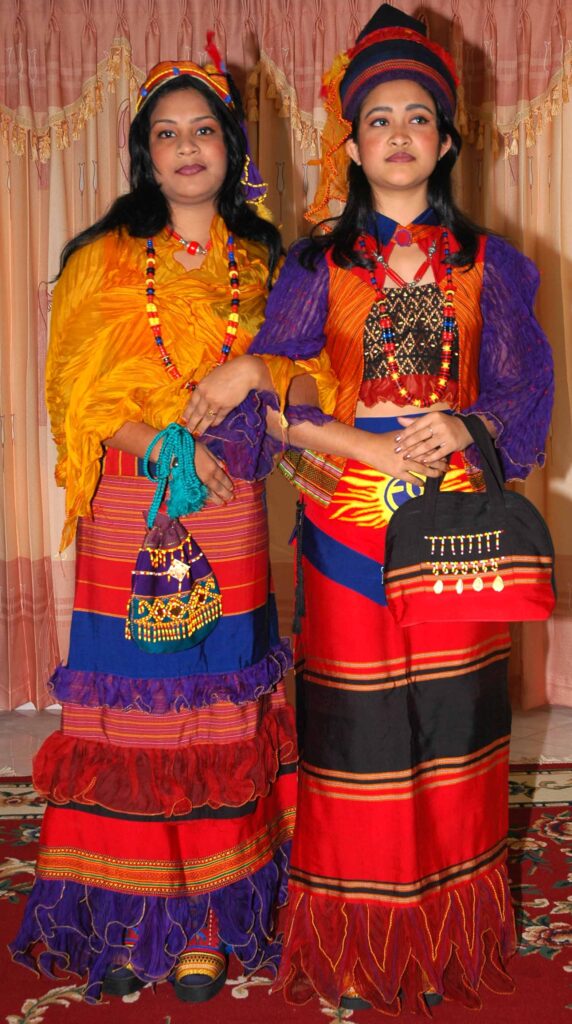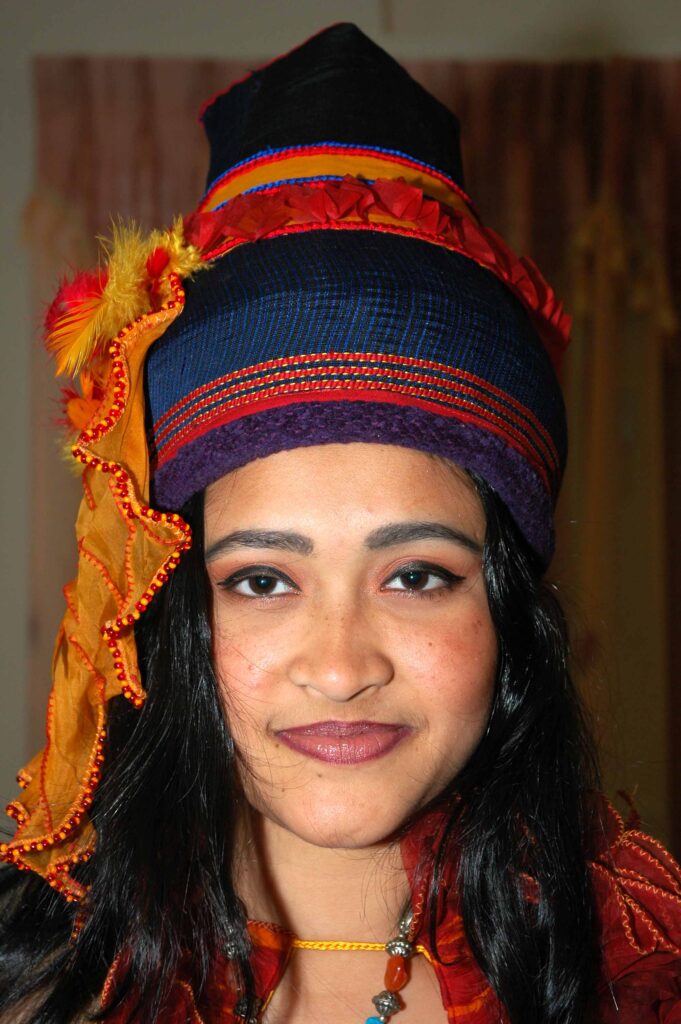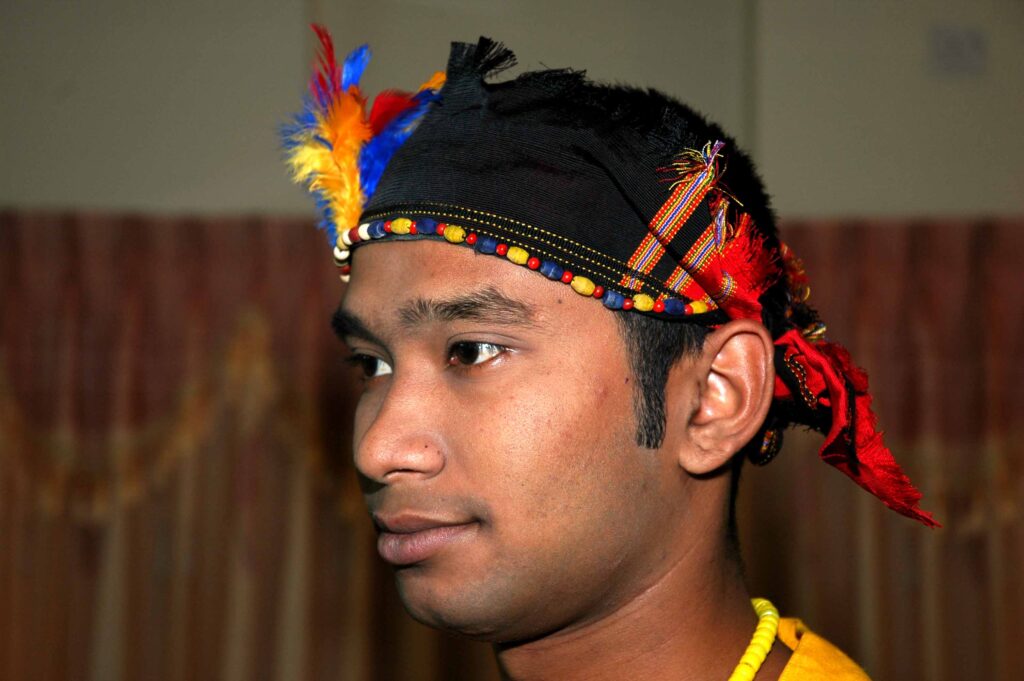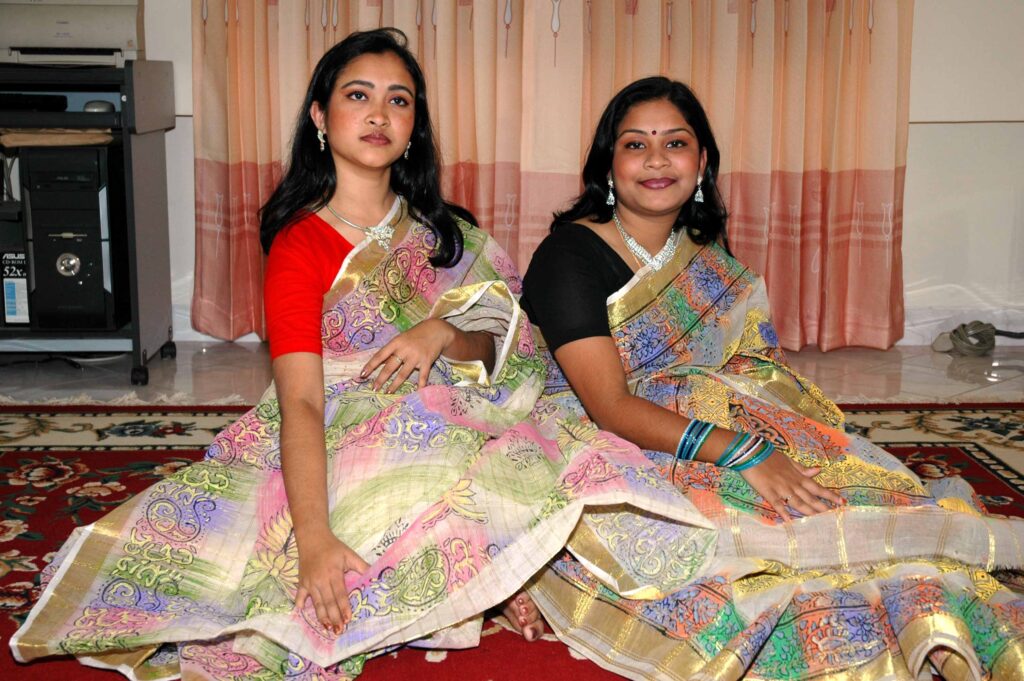
Rakiba Ahmed worked for fifteen years for a Japanese NGO in Bangladesh. Based in Gazipore, the International Angel Association (IAA) provided employment opportunities to rural women through the production and export of fashion accessories based on the Nakshi Kantha design. She worked as the administrative officer and fashion designer. Her job was to design Nakshi Kantha bags, tapestry, cushions, etc. and recruit rural women to undertake their production on their premises. The finished products were shipped to Japan. During the fifteen years, Rakiba had the opportunity to visit Japan and familiarise with the new culture and now likes Japanese rock music very much.
She recalls that her interest in fashion design goes back to even before she started working for the NGO. While growing up Rakiba observed her mother engaged in handicraft making and designing and producing garments for the family. She developed an interest in designing and making things from her mother’s example. She was born in Postagola thirty five years ago, situated in the old part of Dhaka. She is married with one daughter, Anika.

However, after fifteen years with the NGO and when her daughter was born she decided it was time to move on and do something different. In this regard, she got full support from her husband, Mostaq Ahmed, to pursue her dream of becoming a fashion designer. As such she enrolled with the new National Institute of Fashion Design (NIFD) in Banani and passed with excellent results in 2003. Since then, she has had her collections paraded at popular Dhaka fashions shows, including at the Sheraton Hotel. Her collections have also received various press coverage.
Although Rakiba designs fashion wear based on Bangladeshi and western traditions, the main surprise is her interest in developing and promoting traditional tribal designs of Bangladesh. Tribal peoples in Bangladesh mainly live in the Chittagong Hill area and have very rich cultures and traditions. Rakiba feels that their fabrics, designs and traditions should be developed and popularised more not only in Bangladesh but also around the world.
Besides her mother, others who inspired her included Bibi Russell, Chandra Shekhar and Mahi Khan. About the growing trend in western fashion among Dhaka City young people, Rakiba feels that there two parallel trends taking place. On the one hand, fatua and punjabis are being designed more creatively and gaining an increase in popularity. Those who design these items are thinking about the Islamic and Bangladeshi roots of the country. On the other hand, western-based designs are becoming more popular among the city’s youths. It’s about people’s choices and what they want to do and how they want to live their life.
Rakiba feels that it is a positive thing to see creative designers engaged in developing new fashions based on many different traditions, sometimes mixing and other times giving modern looks to traditional garments.
Although she no longer lives in the old part of Dhaka where she was born, she still considers it to be the real heart of Dhaka. She now lives in a new development in Gulshan with her husband and one child. Besides working on fashion designing Rakiba gives a lot of time to her young daughter and listens to Bangladeshi folk songs, Rabindra Shangeet, Nazrul Geety, and western and Japanese rock music. She is also a very good cook and enjoys being in the kitchen, often boasting of her tasty kacchi biryani cooking, a favourite dish of old Dhaka.














